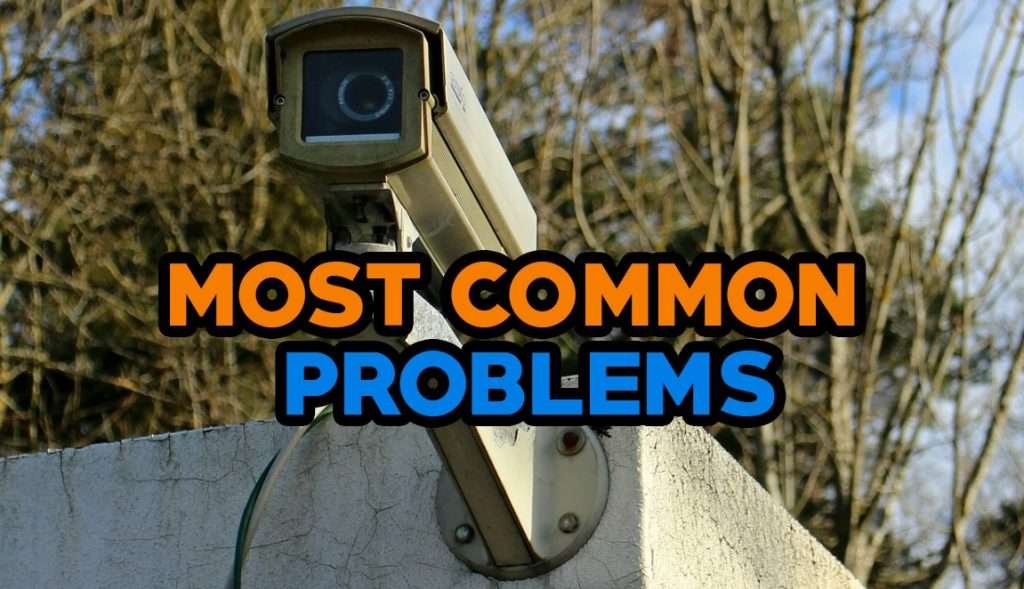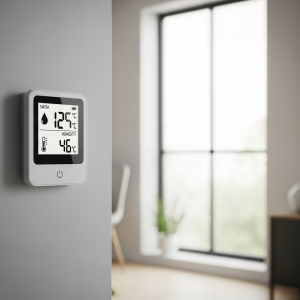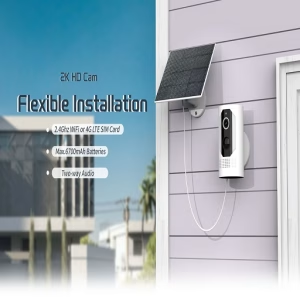Have you ever thought that if you had a home security camera installed, there would be nothing to worry about? You can’t make things so simple. The majority of security systems are not up-to-date, even if you think they are. There are usually a few fixes that can be applied to even the best security systems. Home security systems commonly encounter some problems, but there are some easy fixes that you can implement right away to make your home safer.

Common Problems and Solutions
There are a number of challenges associated with security camera systems, but they are essential tools for surveillance and protection. Security camera systems are prone to several common problems, as explained below:
Poor Image Quality
Description: Poor image quality is a common problem that can be attributed to a number of reasons.
Causes:
- Dirty Lenses: Video footage can be blurry when the camera lens is covered in dust, dirt, or smudges.
- Incorrect Focus: Images will be unclear if the camera is not properly focused.
- Low Resolution: Faces or license plates can’t be identified by cameras with low resolution because they capture fewer details.
- Inadequate Lighting: It is possible to have grainy or dark images due to poor lighting conditions, such as low light at night.
Solutions:
- Keep your camera lenses clean on a regular basis.
- Installation should be performed with the cameras properly focused.
- If necessary, upgrade your cameras to higher resolutions.
- Enhance the low-light performance of your cameras by adding additional lighting.
Network and Connectivity Issues
Description: In order for security cameras to function properly, they need to be connected to the network, especially IP cameras.
Causes:
- Weak Wi-Fi Signal: Often, wireless cameras suffer from weak signals, leading to dropped feeds or intermittent connections.
- Bandwidth Limitations: Video streaming can be delayed or lag due to insufficient network bandwidth.
- Network Configuration Errors: Camera operations can be disrupted by incorrect network configuration settings.
Solutions:
- Use wired connections or a strong Wi-Fi signal to connect cameras.
- Increase bandwidth requirements by upgrading network infrastructure.
- Optimize network performance by verifying and configuring network settings correctly.
Power Supply Issues
Description: To operate continuously, security cameras require a consistent power supply.
Causes:
- Power Outages: Cameras will be disabled immediately if power is lost.
- Inadequate Power Supply: Cameras can fail to function properly or shut down unexpectedly if they are not supplied with enough power.
- Faulty Power Adapters: An intermittent power outage can be caused by a malfunctioning power adapter.
Solutions:
- Provide backup power during outages with uninterruptible power supplies (UPS).
- The camera system must have power supplies that are compatible with its requirements.
- Ensure that power adapters are regularly inspected and replaced if they are faulty.
Storage Problems
Description: To record and archive footage, effective storage solutions are required.
Causes:
- Insufficient Storage Capacity: It is possible to overwrite important footage due to limited storage space.
- Storage Device Failures: In the event that a hard drive or another storage device fails, recorded data can be lost.
- Inefficient Storage Management: Fragmentation and slow access times can be caused by poorly managed storage.
Solutions:
- Storage capacity should be high, and storage usage should be checked regularly.
- Data loss can be prevented by implementing redundant storage systems.
- Maintain and optimize your storage systems regularly to ensure efficient storage management.
Software and Firmware Issues
Description: For camera systems to function and be secure, software and firmware are essential.
Causes:
- Outdated Firmware: There can be security vulnerabilities and bugs in old firmware.
- Software Bugs: Malfunctions and crashes can be caused by software glitches.
- Compatibility Issues: Software incompatibilities can cause problems with camera operation.
Solutions:
- Make sure your camera firmware is up-to-date on a regular basis.
- Software solutions that are well supported and reliable should be used.
- Ensure that all security system components are compatible.
Environmental Factors
Description: Outdoor or harsh environments can negatively affect the performance of cameras installed outside.
Causes:
- Weather Conditions: It is possible for cameras to be damaged or degraded by rain, snow, and extreme temperatures.
- Vandalism: It is possible for cameras to be tampered with or damaged by vandals.
- Obstructions: The camera’s field of view can be blocked by trees, buildings, or other objects.
Solutions:
- For outdoor installations, use vandal- and weatherproof cameras.
- Protect cameras by installing enclosures or housings.
- Ensure that the camera’s field of view is clear of obstructions by regularly inspecting and clearing it.
Privacy and Legal Concerns
Description: Privacy and legal issues can arise from improper use of security cameras.
Causes:
- Unauthorized Surveillance: Individuals with a reasonable expectation of privacy can face legal consequences if their privacy is violated by monitoring.
- Non-compliance with Regulations: If surveillance laws and regulations are not adhered to, fines and legal action may result.
Solutions:
- Where surveillance is legal, make sure cameras are installed.
- Video surveillance laws and regulations should be adhered to.
- Signs indicating surveillance cameras should be displayed clearly for the public’s awareness.
Final Verdict
Safety and security are enhanced by security camera systems. There are, however, a number of challenges associated with them. Among the most common factors that impact the effectiveness of these programs are poor image quality, network and connectivity issues, power supply problems, storage limitations, and software and firmware glitches. Keeping up with the latest technological advancements and maintaining regular maintenance are necessary to handle these problems. It is possible to maximize the performance and reliability of security cameras by managing these issues proactive, ensuring that they provide the functionality and protection they were designed to provide.




